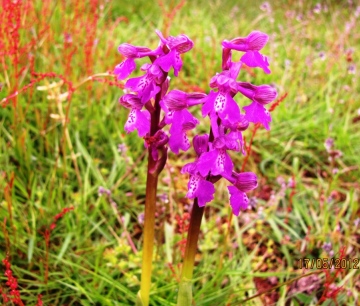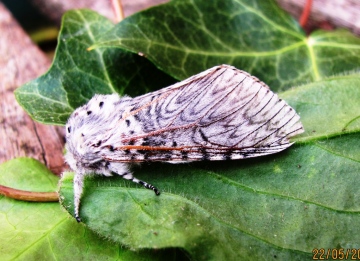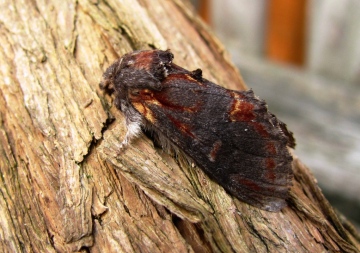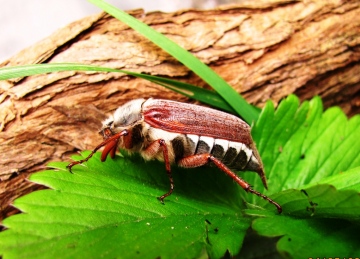Helped Mike Sanderson run a birdwatching course for the Othona Christian Community at Bradwell between 15th-17th - an enthusiastic and sociable bunch of people - and on the final day we visited Danbury Common to listen for Nightingales. We heard six in the end, most thumping away within a few feet of us without ever showing themselves, or giving only the fleetest of glimpses. It is a beautiful area, well managed by the National Trust, and there were also lots of Whitethroats, Chiffchaffs and Blackcaps in song along with a solitary Garden Warbler and at least three Cuckoos. Lunch was taken sitting in the sunshine on Toot Hill, Hitchcock Meadows EWT Reserve, where we were surrounded by Green-winged Orchids, Milkwort, Tormentil and a few late Heath Violets plus many more abundant species such as Common and Sheep's Sorrel, Bulbous Buttercup and Sticky Mouse-ear. There was a solitary Meadow Saxifrage in bloom inside one of the rabbit-proof enclosures while Lesser Calamint - not yet in flower - appeared to be thriving in another. Counted 655 spikes of Green-winged Orchid, a good showing after two dry springs when there were very few. A very pleasant time was had by all.
The BTO are organising a Nightingale Survey this year, a follow up to the last one in 1999, the aim being to plot changes in status and distribution since then. Results so far in Essex suggest that the population is now concentrated between Danbury and Colchester, with very few in the south and none at all in the NW, including Hatfield Forest. Counts in so far include 17 singing ♂♂ at Danbury Common and an impressive 42 at Fingringhoe Wick EWT Reserve, probably one of the highest concentrations in the country.
The re-appearance of the sun after eight long weeks of cold and wet was balm for both body and soul. Not that I am one for sunbathing - I have always likened it to practicing for being dead - but it was good to discard the heavy coats and boots of winter and to feel that you were no longer encased in a suit of armour! Wildlife responded almost immediately to the sudden rise in temperature. There have even been a few moths in the garden trap during the past week instead of an occasional wasp, drowsy bumblebee and spider! Among them were a Puss Moth (only the second I have caught in the garden) and an Iron Prominent.
As in the case of Woolly Bears we used, as kids, to collect Puss Moth caterpillars and rear them at school. They were spectacular beasts, bright green with a brown 'saddle', and had an almost parrot-like face. They would rear up when disturbed and wave their two modified, whip-like back legs at you, and we of course were convinced they could sting us, handling them with great care! Alas, they are much less common nowadays. Another insect that fascinated us as children was the May Bug or Cockchafer, probably because their directional system when flying is of a very basic nature and they had a habit of crash landing on you on warm summer evenings.
After the spring we have experienced bliss can be defined as relaxing in the garden with a glass of wine and a good book to read. Holly Blues, Peacocks, Small Tortiseshells and Orange Tips have all put in an appearance during the past few days, bees are buzzing once more, and as dusk falls I am regularly entertained by a couple of Pipistrelles weaving erratically between sheds and shrubs, suddenly changing tack to pluck up an unsuspecting small tipulid fly or other insect from just above my head. Summer at last!



























